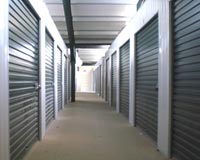 The alternatives sector is bursting into mainstream real estate at breakneck speed. A class of property assets once regarded as marginal is now worth just shy of £15bn and represents 25% of all real estate investment in the UK.
The alternatives sector is bursting into mainstream real estate at breakneck speed. A class of property assets once regarded as marginal is now worth just shy of £15bn and represents 25% of all real estate investment in the UK.
And as the sector continues to see a 10% year-on-year growth rate, investors are eyeing their targets. Results of the 2016 JLL Alternative Investment survey revealed that 79% of investors want to increase their exposure to the alternative market by 2019, and private equity/hedge funds plan to allocate a mighty 29% of their funds to alternatives within the same timeframe.
So why the sea-change? What is it that alternative assets offer that is proving so seductive to swathes of investors? And why are the tables turning now?
A safe bet
The answer is relatively straightforward. In a volatile market where things change fast, the real virtue of the core alternatives is their reliance on demographic trends and life events.
In short, these asset classes are a comparatively safe bet as most of the drivers behind their eventual success are well known in advance, and can be judged with actuarial reliability. From nursery schools through student housing to retirement homes, elderly care and the crematorium business, these alternative sectors are safe because demand is inevitable. Others – particularly in leisure and hospitality – depend on under-provision and consolidating markets.
Pippa Malmgren is George W Bush’s former economic adviser and now advises overseas investors on where they should splash their cash around the world. “Avoiding sexy, glamorous assets is a great way to protect yourself in a changeable market,” she says. “Warehouses by airports, healthcare, student accommodation? We need all of that stuff. Glitzy tall buildings and trophy assets for wealthy occupiers? Not so much. They are very market dependent.”
| Where investors plan to spend | |
|---|---|
| Private rented housing | 24% |
| Student housing | 19% |
| Infrastructure and renewables | 14% |
| Hotels | 11% |
| Self store | 10% |
| Healthcare | 10% |
| Leisure | 9 % |
| Data centres | 3% |
| Source: JLL |
Shaun Roy, Knight Frank’s head of specialist property investment, adds: “The market has changed. Investors’ primary focus now is the longevity and durability of their income return and the specialist sectors are ideally suited to offer this style of investment product to the market.
“Alternatives are a defensive play. With long leases and indexed rents, they do well when the market turns either way. The equity heading into alternatives wants safe, wants secure, wants a lack of volatility; they don’t want to ride too many yield curses. It’s a defensive play.”
Defensive, but also clever: “We like that alternatives allow you to capture inflationary growth on an annual basis through index-linked leases, or through annual tenancies, like the student sector,” says LaSalle Investment Management director John Yeend. “In fast-growing London, that is appealing, and contrasts well with traditional commercial leases where you might have a five-year lag before inflationary growth kicks in.
“London has plenty of opportunities because of its growing population and improved infrastructure.”
 Residual value
Residual value
Student housing is a case in point. London’s student population is expected to rise by 50% by 2026. Today only 9% of the city’s 290,000 full-time students are in purpose-built accommodation, according to JLL research.
LaSalle Investment Management mitigates its risks by sticking to alternative sectors with obvious residual values.
“We only invest when we’re comfortable with the property fundamentals,” says Yeend. “A wind farm is only a wind farm, but other buildings come with alternative uses,” he says.
Joe Guilfoyle, head of alternative corporate transactions at JLL, says events are conspiring to increasingly push investors towards alternatives.
“It’s defensive at this point in the cycle, and if you have high-quality management teams, then alternatives allow you to mitigate the cyclical risks. It’s also appealing to investors priced out of traditional markets. And for the North American investors, the appeal is the yield gap compared to their home markets and other UK asset classes.”
Indeed, overseas money is dominant in the alternatives sector. Drawn by yield gaps of up to 200 basis points in the core alternative sectors, overseas investment accounted for 62% of UK transactions in 2015.
CBRE’s head of specialist markets, David Batchelor, says: “Investment volumes are up because you can make returns in alternatives when the other guys can’t. London is getting more like the US where alternatives are mainstream. And yes, there is risk – this isn’t for absentee landlords. Investors need to understand the operational business and be its long-term funding partner. That partnership is what delivers better returns. This isn’t for anyone who thinks you do a credit-check on the tenant then sit back and wait for the rent cheques to come in.”
Of course, each sector tells a different story – and the reputational risks, regulatory complexities and income growth varies from sub-sector to sub-sector. Some are hot tips for growth, others of the capital’s alternative investments look more compromised. You pay your money and take your choice.
Alternative investment in London
Not long ago, buying into serviced apartments in Hayes, west London, would have seemed an outlandish property move for a big fund manager. Today, it is just business.
Schroder UK Property Fund paid £32.4m, a net initial yield of 5.5%, for the 269-bed High Point Village operated by Staycity. The scheme, sold by Ballymore, is on the doorstep of the new Crossrail station, Hayes & Harlington, opening in 2019.
James Lass, fund manager at Schroder UK Property Fund, says: “As a house we like alternatives, because it’s a market driven by demographics and long-term trends, not by the economic cycle.
“Hayes really appealed. Serviced apartments are under-represented in London compared with other cities, and we looked at it not just as an operating business but as a price per sq ft, which matters too, and at alternative uses – because you have to believe in the operator and in the real estate.
“They key to our investment in London is its growing population – up 1m people in the last 10 years, and we’re expecting the same again in the next 10 years. That’s meant investing in locations that will be needed for that growing population, particularly areas served by improved infrastructure. If we can combine our interest in alternatives with our interest in London’s growing population and infrastructure, then that’s ideal for us – and that’s exactly what Hayes did for us.”
David Thame asked some of the top brokers and investors for their tips for short-term and long-term growth… here are their choices.
Data centres
An owner-operator dominated sector is about to turn into a big alternative investment play, says data centre specialist Martin Miklosko, director at CBRE.
“There’s a fundamental change going on – self-build by the operators is slowing because their needs are growing and changing so fast they can’t build quickly enough. So the last 12 months has seen them start to take leases,” he says.
JLL predicts consistent growth in the co-location data centre market of 10-15% per annum and prime yields holding steady at 5-6%, closer to 5% in central London
But it’s not everybody’s cup of tea. John Yeend of La Salle Investment Managers says: “Data centres depend on the technology inside them, not the property, and we don’t control the technology.”
 Crematoria
Crematoria
“People are squeamish,” says Savills’ James Higham, “but the evidence suggests people keep on dying. This is a young industry, and there is scope for investors who can overcome the barriers to entry.”
The crematorium world has moved out of local authority hands into the private sector with three groups dominating: Dignity, Westerleigh, and the Co-op. A site of 5-6 acres will be required – 10 acres would be good. Around £3m will fit out a crematorium capable of taking 1,100 services a year, and the total capital value on completion will be around £4.5m. The profit margin is around 25% on development. There’s scope for adding value by including social spaces for wakes and receptions. The yield is anybody’s guess because open market sales are rare. Trade purchases suggest a figure around 7-9%, says Higham.
“A lot of London crematoria are getting older, aren’t very nice, are at or over capacity and are inefficient – it can take a long time to get people burned in some places,” says Higham, with enviable sangfroid. “But finding sites is difficult – higher value users snap them up first – and planning almost always goes to appeal.”
Near-urban farmland
Prices within the M25 vary from £9,000 an acre for blocks of good arable land, up to £20,000 plus for smaller well-located parcels. The yield is trivial – agricultural rents are £80-£150 an acre – but capital growth is assured, with average prices rising by 200% in the last 10 years (according to Knight Frank).
Richard Liddiard, partner at Carter Jonas, says: “There’s the potential for windfall gains if investors play the long game. It may take 15-20 years before the windfall arrives, perhaps longer, which is why it is unwise to sell without some kind of covenant to share the uplift in values.”
Typically covenants insist the former owner gets a 40% share of the increased land value in the first 10-15 years after selling, maybe 25% after that. “But beware, investors are shy of buying encumbered land,” warns Chris Spofforth, director at Savills. “Even so, many are taking a long-term punt on near-urban parcels.”
 Vineyards
Vineyards
Vineyards – covering about 3,000 acres mostly in Sussex, Surrey and Kent – provide cachet and improved land prices (£25,000 sq ft per acre and more). “Vineyards are going nuts,” one intermediary told EG. Champagne house Taittinger recently bought 170 acres in Kent, a sign of a maturing market.
Retirement villages
Retirement villages could be the new PRS if a viable investment model can be created – and the race is on to be the first.
Until now the main providers – lead by McCarthy & Stone – have operated a variant on the normal housebuilding model, simply selling units to occupiers. But that could soon change. Richard Harris, head of alternative investments at Strutt & Parker, explains: “There’s no investment model right now, but everyone’s talking about it. But private equity is already backing the sector, which is a tell-tale sign that something’s happening.”
David Batchelor, executive director at CBRE, says: “Give this five years, and it will be mainstream. I guess the opportunity is to create an annuity-type income stream, and there are five or six investors working out how they could evolve this market.”
One hurdle to an investment model has recently been removed. The government seems to have accepted the fairness of “assignment fees” and “event fees” – charged by the operator when a retirement home changes hands.
Nationally it could be big: JLL estimates that there is a potential requirement for an additional 725,000 housing-with-care units in the UK by 2025.
“We’re focused on London,” says Richard Davis, chief executive of LifeCare, as the first residents move into his new £120m retirement home at Battersea, SW11.
The 140,000 sq ft development at Albert Bridge Road is the first of its kind in central London, including 108 retirement flats and a three-bedroom care home.
“Demand is strong in London from children who want their parents near their own homes, but also from parents who live in central London and do not want to leave,” says Davis.
“If we follow trends elsewhere in the world – where up to 5% of over-65s live in retirement communities, then we need at least another 250 more Batterseas.”
LifeCare is preparing another site in West Hampstead, and a development pipeline of one or two a year for the next five years. These will be the first blocks in a growing London alternative investment scene, says Davis.
“A trading market in this class of asset is forming, but we need to see more built first and overcome some of the issues on event fees paid by residents, which is an obstacle today to an investment product, but the issue is being resolved. Give this market five years, and we could be there,” he says. Care homes
Care homes
“Care home are the best bet for an undervalued alternative investment,” says Knight Frank’s Shaun Roy.
An aging population means more care homes will be needed in the UK – but in London demand could be higher as care is brought back into the city from suburban or home counties locations.
“The younger demographic living today in Clapham or Putney will not want to travel far to see their elderly relatives, so demand for inner-urban care homes will be growing. Developers are already moving into this sector and, for investors, it is one with low risk because the property can be used for other alternative uses – so there is residual value,” says Richard Harris, head of alternative investments at Strutt & Parker.
Operators are already stepping up their London investments, says Savills director Colin Rees-Smith. “We’re looking at yields under 5% for the right product, low 5s otherwise, but sites in central London are unreliably rare. The most recent deal we’ve seen was further out in Kingston-upon-Thames.”
US REITs such as Welltower, which has driven investment in the sector, are pausing to consider their next moves – and this could indicate a period of slower growth, says CBRE.
Investors are still cautious about the reputational risks of getting involved with personal care. However, specialists say an improved regulatory regime has reduced the dangers.
 Self storage
Self storage
“It’s basically just a big box and we don’t want to overpay for that,” one investor told EG, not very impressed with the self-storage sector’s appeal as an alternative investment. That isn’t everybody’s view.
SSA UK/Cushman & Wakefield research shows that after a chilly period, the self-storage industry is definitely beginning to grow, expanding by 1.3m sq ft in 2014. SSA UK estimates there are now 1,022 self-storage sites in the UK (of which 159 supply container storage only), an increase of 13% since 2013.
Canny observers say the future depends on newly built units, rather than conversions. Around £250m is expected to be transacted in 2016, much driven by a 200 basis points yield gap between UK and US self-store investments.
 London pubs
London pubs
London pubs go out of business at the rate of 10 a week: 497 are said to have closed in 2015, many converted into apartments. But the traditional London boozer is a surprise tip for an emerging alternative investment sector with strong short-term potential.
The closure of many pubs has left London with a smaller but better-located and more modern pub portfolio, says CBRE’s David Batchelor.
“The rules on tied houses will change, and within five years we will see a sector once dominated by the providers of beer turned into one dominated by the property companies those breweries are now turning themselves into. We may even see some pub REITs, and there’s an advantage in buying pubs today when they are still priced as operational businesses, not as underlying property assets,” he says.
Serviced apartments
Some smart money is heading into London serviced apartments and aparthotels. They represent one of the fastest-growing parts of the hospitality sector with supply increasing at 3.9% annually since 2008.
LaSalle Investment Management’s John Yeend says: “It’s an interesting sector. There’s a shortage of housing and a shortage of hotel beds, and tourists and business people are increasingly sophisticated about how they use facilities. This could be a big market for London.”
Max Thorne, managing director of hospitality at JLL, says the dynamics are similar to PRS. Blocks of 100-150 apartments trade for £50m-£100m in a market with a large group of global corporate providers probably due for consolidation. London yields are 5-5.4% on long leases. “Even in suburban locations like Hayes – not a triple A location – we’ve seen a block on a 35-year lease change hands for £32m to a long-term UK investor,” he explains.
Compared with New York, London is significantly underprovided (by a factor of about four), and new supply is arriving slowly (under 2,000 units a year).
“As an operational business, serviced apartments have strong revenue potential, because there is similar revenue per room but lower staff costs than in hotels,” says Thorne. “Expect yields to get tighter, although only slowly. This is an early stage market, like student housing was a few years ago.”











